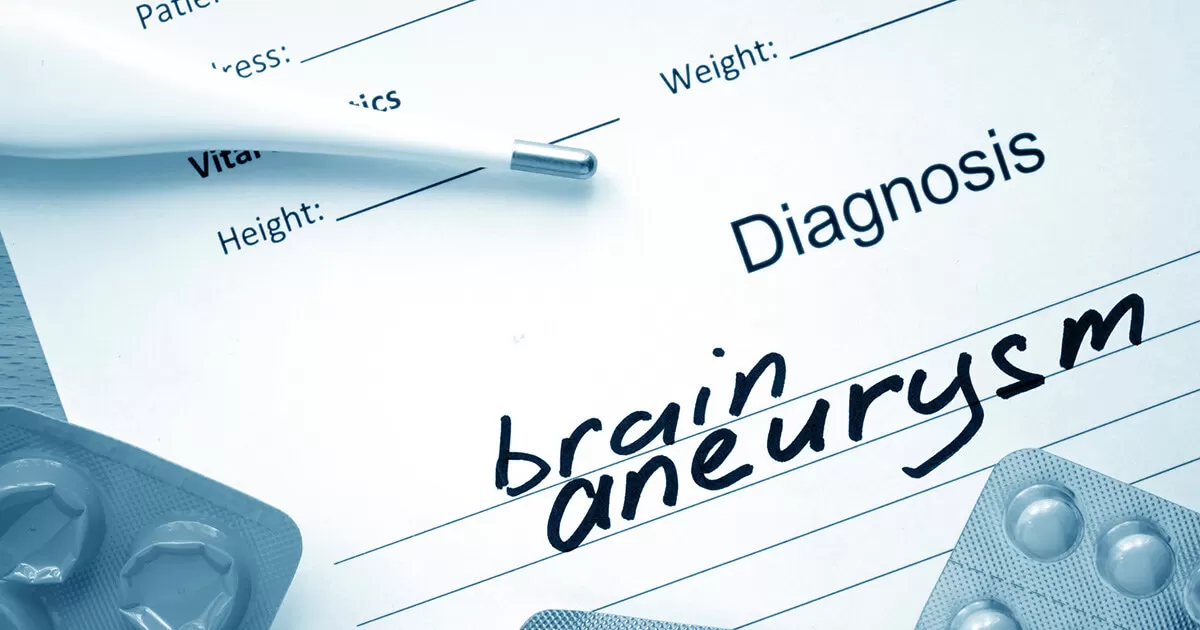My Story: Surviving a Brain Aneurysm

I have always been a healthy and active person. In 2014, I was working two jobs: one as a safety associate at Pfizer and one as a neonatal nurse. I was also preparing for a triathlon. Things were great in my life—except for the occasional bout of migraine headaches.
Later that year though, I began to experience nausea along with the headaches which grew more and more painful. Like anyone else might do, I passed it off as stress and decided to back off of my athletic training a little to see if that helped—it didn’t. I began to worry something was wrong.
Getting the Shock of a Lifetime
A neurologist at the hospital where I worked assured me that migraines are common, but he took scans of my head to be sure. The next day he called and asked to see me in person to go over the results. I learned in his office that I had an aneurysm, a balloon-like bulge in a blood vessel that can potentially burst. He advised me not to worry because most people go a whole lifetime with an aneurysm that never ruptures but that I should meet with neurosurgeon just in case.
Shortly after my first meeting with a neurosurgeon, I collapsed on my front steps. I remember feeling strange and experiencing sudden fatigue before my fall. I managed to pick myself up, but the next day, I woke up with a headache and neck pain so bad that it brought me to tears. It never occurred to me that my aneurysm may have burst at that moment. Thinking it was just another migraine, I decided to wait for my next appointment with another neurosurgeon.
Surviving Brain Surgery
The second neurosurgeon performed an angiogram (an imaging test to see the blood flow in the brain), which showed I had a left multi-lobular ophthalmic brain artery aneurysm—meaning an aneurysm behind my left eye. It had ruptured. The amazing thing is that it had stopped bleeding on its own—this isn’t the case for most people.
The surgeon explained that I needed brain surgery in order to help prevent it from rupturing again. He placed a stent in my brain by going through an artery in my thigh. A stent is a tube placed in an artery to keep blood flowing in the brain, but stop blood flow to the aneurysm.
Many people ask me how I got through it such a difficult thing. That was easy for me to answer—my family, my friends, my boyfriend, and all the people who were rooting for me. I pictured myself making more happy memories with my father, a cancer survivor. And I promised myself that I would do everything I could to be there to support my pregnant sister when she gave birth to my nephew.
Recovery is a Long Journey
Recovery after surgery wasn’t easy. I suffered from head pain, blurry vision, sensitivity to light and extreme tiredness for months. The aneurysm eventually shut down and my symptoms improved. I am fortunate to have survived the surgery, without having gone into a coma or having major complications during the surgery, and to have heard my doctor say months later, “It’s as if the aneurysm was never there.” But it doesn’t mean that I received a bill of perfect health.
Today, I take blood thinners and other medicines as preventative therapy. I still suffer from headaches and fatigue. And I need to see my doctor regularly for monitoring. He will continue to perform angiograms and other tests for the rest of my life. All this because when you have one aneurysm, there’s a 10% to 15% chance you can develop another one.
Life after Aneurysm
Though I experience post-surgery symptoms, I feel that my life is better now than it used to be. And while I’m not going to enter a triathlon any time soon, I am helping to organize a Pfizer Spring Sprint 5K event on May 5th, 2016 to increase brain aneurysm awareness. It’s my goal to be able to walk the entire way.
I was recently asked: knowing what I know today, would I have done anything differently? Well, as far as the aneurysm, what I’ll say is that most people with a brain aneurysm don’t experience any symptoms at all. They usually appear only after the aneurysm bursts. But looking back to the day of my collapse, I regret not going to the hospital right away. So this is my advice for you: (1) trust your instincts—if you don’t feel right, follow up with it, and (2) embrace your diagnosis—whatever it is, do what you can to learn about it and manage it. Ignoring it will only make things worse.
I’ll end by saying that there is life after an aneurysm. I know that I am one of the lucky few, and the day-to-day isn’t always so easy, but I plan to live my life to the very fullest. My heart is filled with gratitude for the support I have with my loved ones and coworkers and with much joy because I was able to be by my sister’s side and welcome my beautiful new nephew into the world!
Jennifer Casoni, RN, is a registered nurse and a Safety Surveillance Associate at Pfizer.
[1][2][3][4][5][6][7][8][9][10]
References
- 1. Migraine Research Foundation. Migraine fact sheet. Accessed February 18, 2016.
- 2. Orenstein BW. What it feels like to have a brain aneurysm. Accessed February 18, 2016.
- 3. Brain Aneurysm Foundation. Understanding: Brain aneurysm statistics and facts. Accessed February 18, 2016.
- 4. Brain Aneurysm Foundation. Understanding: Treatment options—Other procedures. Accessed February 18, 2016.
- 5. Brain Aneurysm Foundation. Understanding: Post treatment and outcome. Accessed February 18, 2016.
- 6. Brain Aneurysm Foundation. Patient resources: Recovery. Accessed February 18, 2016.
- 7. National Institute of Neurological Disorders and Stroke. Cerebral aneurysms fact sheet. Accessed February 18, 2016.
- 8. Brain Aneurysm Foundation. Understanding: Treatment options—Frequently asked questions of aneurysm patients. Accessed February 18, 2016.
- 9. eMedicineHealth. Aneurysm (brain) (cont.). Accessed February 18, 2016.
- 10. WebMD. Brain aneurysm—topic overview. Accessed June 18, 2015.





